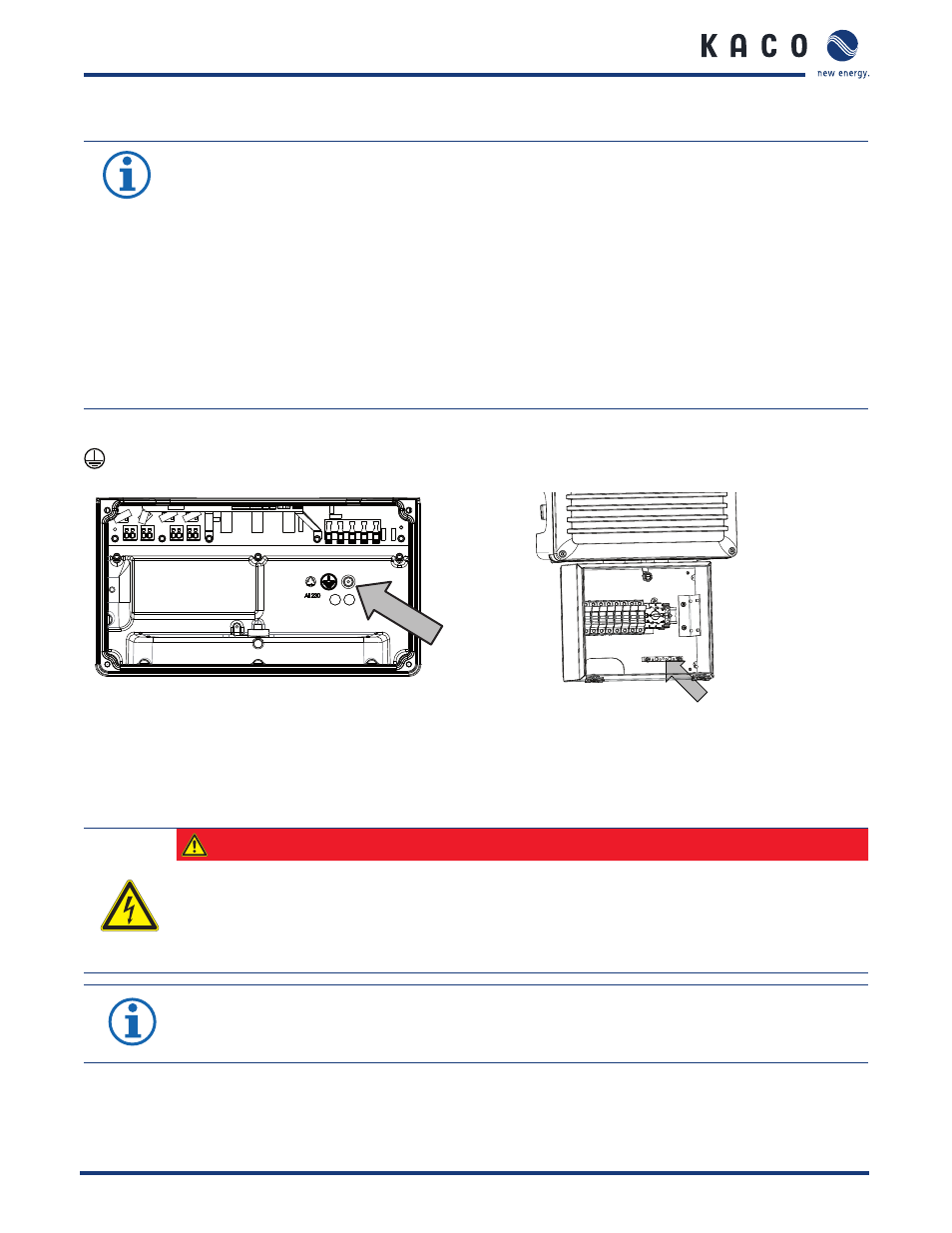4 connecting the interfaces, 3 grounding the housing – KACO XP10U-H4 User Manual
Page 26

I n s t a l l i n g t h e I n v e r t e r
Page 26
Installation Instructions blueplanet XP10U H4 / H6 and XP10U H4 / H6 PSD
7.3.3
Grounding the housing
NOTICE
The XP10U product line construction topology is that of a non isolated (transformerless) inverter.
UL1741 and the NFPA 70 does not require a grounding electrode conductor (GEC), and ground electrode
termination point for non isolated inverters.
UL1741 and the NFPA only require a GEC terminal within the inverter if the inverter bonds the PV system to
ground. Non isolated inverters do not bond the PV system to ground.
The NFPA 70 2011 sec 690.47 covering grounding electrodes contains signifi cant clarifi cations over previous
revisions. Sec 690.47 requires all PV systems to have a grounding electrode system, and details several
methods of compliance.
Further code making dialog for the 2014 also has been presented, which adds additional clarifi cation
stating that ungrounded PV systems can have the their equipment grounding requirements met by the
AC equipment grounding system without the requirement for a DC GEC or grounding system.
An optional grounding terminal is provided inside the inverters as shown in Figure 17. Ground the housing of the inverter,
if necessary, at the grounding point provided for that purpose in the connection area of the inverter. It is marked with the
symbol.
Figure 17: Grounding point in the connection area
Figure 18: Grounding point in the PSD connection box
7.4
Connecting the interfaces
All interface connectors are located on the connection board.
DANGER
Risk of fatal injury due to electric shock
Severe injury or death from improper use of the interface connections and non-observance of protection
class III.
›
The SELV circuits (SELV: safety extra low voltage) can only be connected to other SELV circuits with
protection class III.
NOTICE
When laying the interface connection cables, note that too little clearance to the DC or AC leads can cause
interference during data transfer.
